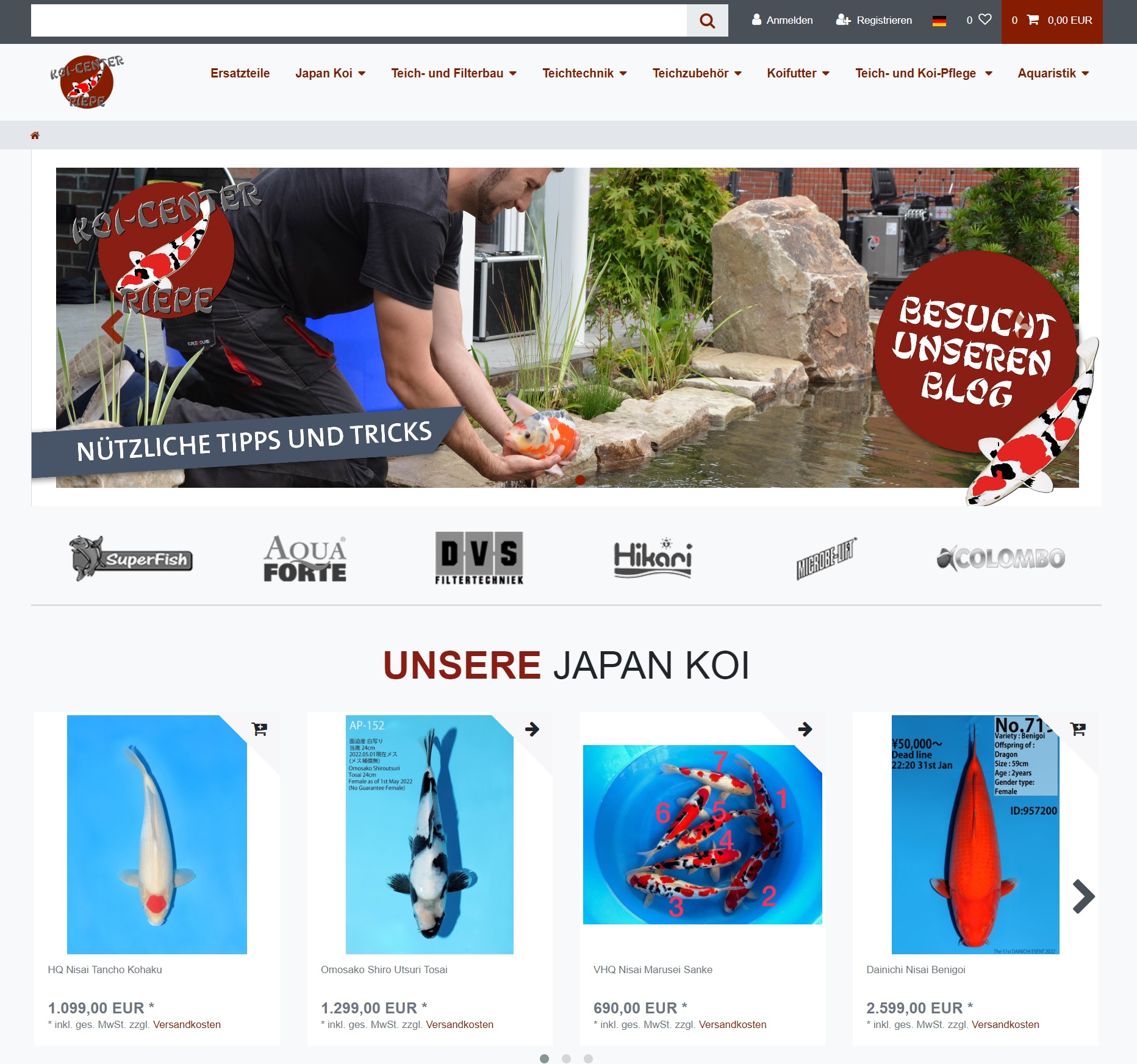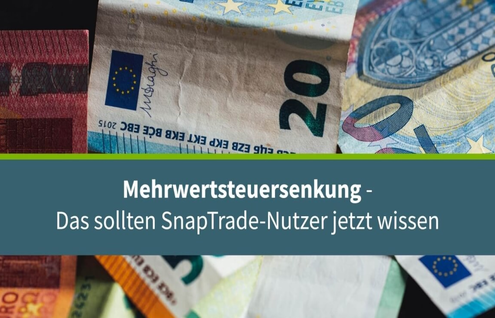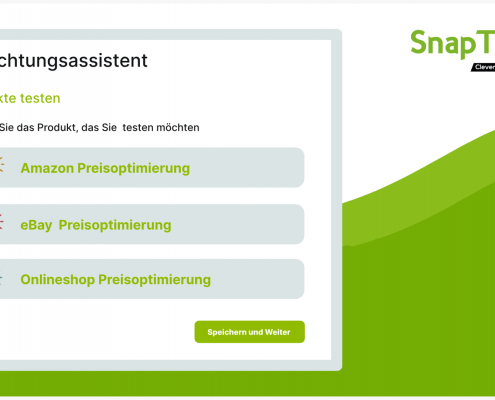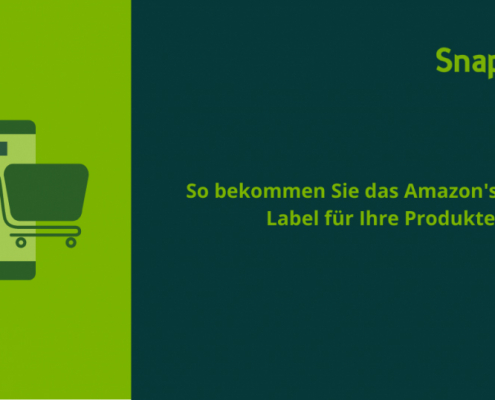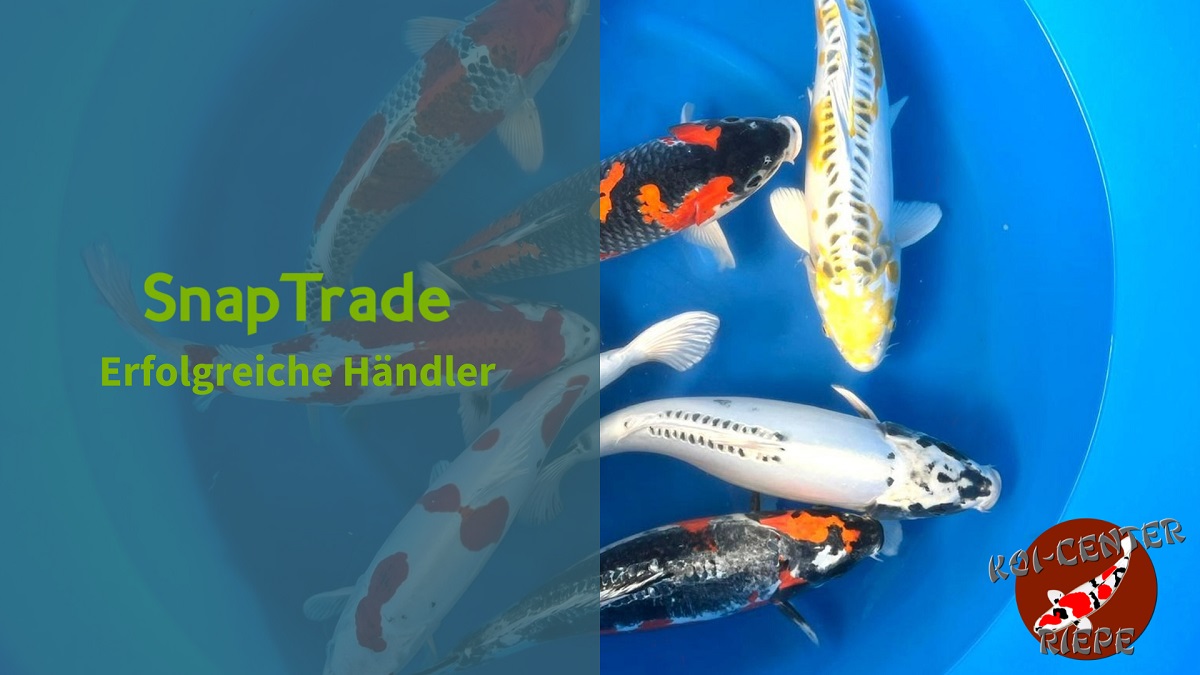
One of the greatest strengths of the cloud-based SaaS ERP plentymarkets is its numerous integration options. SnapTrade can also be easily connected to the ERP via our REST API. One of our customers who uses this system combination is Koi and pond construction expert Koi-Center Riepe. Daniel Svoboda tells us in an interview how exactly the communication between plentymarkets and SnapTrade works, what convinced him and his team to use our repricer, and why it ultimately even turned the company’s pricing on its head.
Mr. Svoboda, thank you very much for making yourself available for our interview! First of all, tell us something about Koi Center Riepe
Gladly. The Koi Center Riepe has now been in existence for almost 20 years. We founded it in 2004. The idea was there before, but that’s where it all started. Initially, we focused on just selling koi before pond construction was added. In 2006, in addition to our local business, we also started selling on eBay and built our own online store. That was simply in keeping with the spirit of the times. Then, when Amazon became a little more well-known, we started using that platform as well. In addition, we have recently joined Hood. I strongly expect that we will expand our online activities even further in the future.
In terms of koi and pond construction supplies, the online store of Koi-Center Riepe leaves nothing to be desired.
Now you have already mentioned some online marketplaces. How important are they for your business? Is there one channel that stands out in particular?
eBay and Amazon alone generate around 80 percent of our online sales. Accordingly, it is important for us to be present in the marketplaces. Fortunately, it’s also relatively easy because you can gain a lot of reach with comparatively little of your own effort in marketing. The platforms already enjoy a high level of trust among customers, from which we naturally benefit. But it is not only in terms of sales that the marketplaces are of great importance to us. The increase in sales also allows us to purchase larger quantities from our suppliers. This improves our standing with them and enables us to offer better purchase prices. At the same time, the platforms are also something like indirect advertising for our local business. We’ve had quite a few customers come to us who saw us on eBay or Amazon and thought, “Wait, I know them. That’s right around the corner.”
Let’s pivot a bit in the direction of price optimization. What did it look like for you before SnapTrade? Did you already have comparable tools in use?
Before we switched to plentymarkets, we were using a different ERP and a repricing tool with it, but this was not connected via an interface. This meant an insanely high manual effort for us. Moreover, this tool also updated itself only once a day and was thus tremendously sluggish. Originally, we also wanted to integrate this solution into plentymarkets, but that didn’t really work out because we still had an immense amount of maintenance work.
For a while, the topic had evaporated somewhat because we had other construction sites. In the meantime, we have switched to marketplace-internal solutions, but these have not proven themselves in practice either. After that, we went from one solution to another until our research brought us to SnapTrade. This happened in the plentymarkets forum, where I mainly go to look for suggestions and solutions. This is where SnapTrade stood out.
Why?
Because the connection is just super easy, especially in terms of Amazon price optimization. You simply assign a user name and password in plentymarkets and then you can transfer virtually all relevant data. In the forum was often read about this simplicity. So we wanted to try out the software ourselves, so we picked up the phone and called SnapSoft. After 20 minutes, we knew we didn’t need to look any further.
How long have you been using SnapTrade in conjunction with plentymarkets now?
We’ve been using SnapTrade for about a year and a half now and I can honestly say that we’re absolutely thrilled with it. Everything works as we imagine it. The support is very competent and the communication channels are short. Instead of 1st, 2nd and 3rd level support, we have a direct contact person, which works really well and, above all, quickly. Especially in the first few weeks, when you need a bit more communication, there was practically no situation where we didn’t have an answer within half an hour.
We are very pleased that you are so satisfied! Now you have already revealed a bit about SnapTrade and its connectivity. How did you go about setting it up? Can you share some more info on this?
We initially connected the most important marketplace for us, which is Amazon. As already mentioned, this was very easy. We got a little briefing from support on what to look out for. You just have to create a new user with certain rights so that the prices can be retrieved from the interface, and then you’re basically good to go. SnapTrade pulls the necessary data from Amazon and compares SKUs or ASINs without variants for a match. In case of a match, SnapTrade can adjust the prices. We basically only had to maintain the material master, but had already done most of the work beforehand. Therefore, we only needed to create minimum and maximum prices within which SnapTrade would make the price changes. These are the two key figures we mainly work with.
Tip: For more information on connecting SnapTrade to plentymarkets, see our help.
Do you use any other SnapTrade features?
We use the BuyBox-MAX strategy, which in our experience is also very mature. This is evident from the sales. This application also works very simply. You don’t have to export big data sets or anything like that, while always having the option to download information and fine tune it again.
Apart from that, SnapTrade has also changed our calculation and opened our eyes a bit. Before, we had items where we made 20, 30 cents and sometimes even paid on top. We had well over 1,000 items in the range. With the masses, errors in the calculation often go undetected. Here SnapTrade was a great help. You get played out what you would win or lose if you follow the minimum price. This gave us a good overview of our margin, which helped us a lot in evaluating our assortment and sorting out or promoting the items This ultimately encouraged us to turn our entire calculation on its head. We no longer wanted to sell as many items as possible at the lowest price. Our goal with SnapTrade is to optimize margin, which works very well with the BuyBox-MAX strategy. Some items we sell way above MSRP. SnapTrade acts very intelligently here and pulls up prices when there is demand, and so do competitors.
Were there any challenges you had to overcome during the implementation?
If you are a bit familiar with the subject and also have some experience in data processing, most things are self-explanatory. What we didn’t understand right away was explained to us. A bit more complicated was the use with plentymarkets and SnapTrade regarding eBay price optimization. At the end of the day, however, even that was just an elastic export that you do when you plenty. The data is matched based on the EAN and then uploaded. Meanwhile, this is also a process that takes less than three minutes after the initial execution.
Currently, however, we have deactivated the function again because none of our competitors has a comparable tool in use and the dynamic price adjustment is therefore not necessary. The service department was very accommodating and adapted the contract for us, so that we pay a lower rate, but also have a reduced service for eBay price optimization – which we don’t need at the moment. The fact that they don’t insist on their standard here and try to find individual solutions even for niche markets like ours is very commendable in my opinion.
Is there a feature you would still like to see for SnapTrade in the future?
In perspective, a better usability of eBay price optimization would be desirable. Here, for example, a plugin for Plentymarkets or other store systems would be conceivable, which adjusts the price in its own store based on other online platforms such as comparison portals, similar to ShopSPY.
What is the future of the Koi-Center Riepe? What do you have planned for 2023?
Good question, we are planning a renaming. In the future we will separate from our regional reference “Riepe” and make the market unsafe as “NORDICPOND”. This has to do with the fact that we start projects nationwide or even Europe-wide, supply customers and our community also grows beyond the national borders. We also have the vision of supplying customers with our products and knowledge at several locations in Germany in the future.
Online, there will also be big changes. In addition to a new online store and an overall change in design and branding, we want to restructure our product line to include higher quality products and pay more attention to sustainability and energy efficiency. The times ahead will require that we evolve here and not persist in old habits. Our store pricing is also to become more dynamic. We are already planning an interface where we can better analyze the competition in the future. We will also use tools like ShopSPY, because the product sounds really promising. Tests are already on our agenda for 2023.
There is an SEO strategy for our platform trade, which we will push after the relaunch. With NORICPOND, we have a registered brand that we want to promote with our own products. We want to invest and develop even in the times when everyone is saving and focusing on the essentials.
You’ve set yourself a lot of ambitious goals there! We are convinced that you will be successful with the implementation and wish you and Koi-Center Riepe – or rather NORDICPOND – all the best for the future! Thank you so much for taking the time to share your experience with our community.
We would like to thank our interview partner Daniel Svoboda from Koi-Center Riepe, in the future NORDICPOND.

